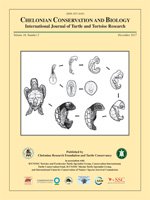Many marine organisms (invertebrates, fishes) produce large numbers of small offspring (larvae) that differ in appearance and behavior from adults. That outcome occurs because larvae as they grow occupy one or more ontogenetic niches that select for phenotypes that differ from those that promote adult survival. Our purpose in this study was to determine whether similar associations also occur in marine turtles. To find out, we examined relationships between juvenile appearance (body shape) and the ontogenetic niches occupied by 3 species of marine turtles: leatherbacks (Dermochelys coriacea) and 2 cheloniids (green turtles, Chelonia mydas; loggerheads, Caretta caretta). Our measurements indicate that juvenile body shape differs the least from adult body shape in leatherbacks and the most from adults in the 2 cheloniid species. We present evidence from other studies showing that juvenile leatherbacks occupy ontogenetic niches that resemble adult niches, whereas during their ontogeny, both juvenile green turtles and loggerheads make radical niche shifts as they transition between oceanic and neritic habitats. These results are thus consistent with the hypothesis that many morphological and behavioral characteristics expressed by juvenile marine turtles, like those of other larval forms, are best understood as evolved responses shaped by the characteristics of their ontogenetic niches.
How to translate text using browser tools
6 December 2017
Ontogenetic Niches and the Development of Body Shape in Juvenile Sea Turtles
Jessica H. Pate,
Michael Salmon
ACCESS THE FULL ARTICLE
body shape
habitat shifts
ontogenetic niches
sea turtle ontogeny





